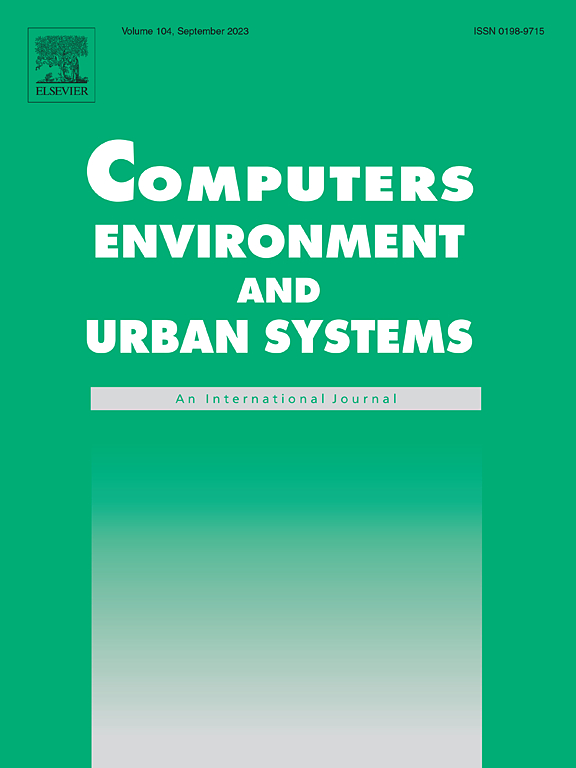利用空间微观模拟和计量模型模拟家庭能源行为扩散
IF 8.3
1区 地球科学
Q1 ENVIRONMENTAL STUDIES
Computers Environment and Urban Systems
Pub Date : 2025-02-08
DOI:10.1016/j.compenvurbsys.2025.102256
引用次数: 0
摘要
从空间角度分析家庭能源行为对政策制定者和网络运营商都至关重要。然而,在精细尺度上进行空间分析面临着重大挑战,主要是由于数据稀缺。本文展示了整合空间微观模拟和空间计量经济学模型来解决这一问题的潜力。具体而言,我们构建了一个静态空间微观模拟模型,为整个荷兰创建一个合成人口,模拟家庭能源行为的邻里空间分布。结果表明,能源行为的采用存在显著的邻里空间异质性。随后,该模拟输出被用作空间计量模型的输入,以分析家庭能源行为采用的邻里水平的空间决定因素。我们确定了空间内生效应和社区特征在促进观察到的家庭能源行为的空间变化中的作用。本文章由计算机程序翻译,如有差异,请以英文原文为准。
Simulating household energy behavior diffusion using spatial microsimulation and econometric models
Analyzing household energy behaviors from a spatial perspective is crucial for both policymakers and network operators. However, conducting spatial analysis at a fine scale presents significant challenges, primarily due to data scarcity. This article demonstrates the potential of integrating spatial microsimulation and spatial econometric models to address this issue. Specifically, we construct a static spatial microsimulation model to create a synthetic population for the entire Netherlands, simulating neighborhood-level spatial distributions of household energy behaviors. The results indicate significant neighborhood-level spatial heterogeneity in the adoption of energy behaviors. Subsequently, this simulated output is used as input for spatial econometric models to analyze the neighborhood-level spatial determinants of household energy behavior adoption. We identify the roles of both spatial endogenous effects and neighborhood-specific characteristics in contributing to the observed spatial variations in household energy behaviors.
求助全文
通过发布文献求助,成功后即可免费获取论文全文。
去求助
来源期刊

Computers Environment and Urban Systems
Multiple-
CiteScore
13.30
自引率
7.40%
发文量
111
审稿时长
32 days
期刊介绍:
Computers, Environment and Urban Systemsis an interdisciplinary journal publishing cutting-edge and innovative computer-based research on environmental and urban systems, that privileges the geospatial perspective. The journal welcomes original high quality scholarship of a theoretical, applied or technological nature, and provides a stimulating presentation of perspectives, research developments, overviews of important new technologies and uses of major computational, information-based, and visualization innovations. Applied and theoretical contributions demonstrate the scope of computer-based analysis fostering a better understanding of environmental and urban systems, their spatial scope and their dynamics.
 求助内容:
求助内容: 应助结果提醒方式:
应助结果提醒方式:


